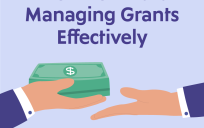On April 24, the Department of Justice’s final rule updating its regulations for Title II of the Americans with Disabilities Act (ADA) was published. At a high level, the ruling requires state and local government agencies to ensure their digital content and mobile applications adhere to (WCAG) Version 2.1, Level AA requirements within the next two to three years.

There’s a lot in the ruling but at a high level there are several key items that agencies and their partners and providers should keep in mind:
- Overview — Agencies who provide public services at the state and local level will be required to provide accessible digital content and mobile applications to the public they serve. Previously, the DOJ recommended accessibility approaches but this is the first time the DOJ is requiring accessible digital technologies.
- Requirements — Agencies must ensure that content and mobile applications specifically adhere to the Web Content Accessibility Guidelines (WCAG) 2.1 AA standard. This includes:
- Any new content and mobile applications that serve the public including content and applications produced by third-party service providers on behalf of the agency.
- Existing content and mobile applications, provided such content is still relevant and is used by the agency to inform the public.
- Exceptions — There are some exceptions to the ruling which includes allowing agencies to bypass making old or archived content accessible as well as not requiring agencies to retrofit accessibility into existing social media content (such as content on Instagram, X, Facebook, for example.) This helps balance the need to make content accessible with the practicality of updating a lot of outdated content.
- Timeline — for agencies who serve populations of less than 50,000, as well as special district governments, they have three years to comply (required by April 26, 2027). For agencies that serve more than 50,000 people, they have two years to comply (required by April 26, 2026).
Two to three years may feel like plenty of time but it would benefit agencies to start to think about this project now. Some ways that state and local agencies can make their content more accessible include:
- Leveraging the US Web Design System (USWDS) which many Federal agencies currently use. This design system, created and maintained by 18F and the US Digital Services (USDS) is open source and free to use. It has been designed with accessibility at its core since its inception, in 2015.
- Working with digital services companies who specialize in accessibility, particularly those who work in the open source community.
- Learning more about WCAG 2.x tools and approaches so that content your agency produces in the future will be accessible by default. There are even courses and certifications agencies can get that can help those who want to learn more and bring the work in-house.
When done right, accessibility makes experiences better for everyone, not just specific groups of users. By ensuring you’re thinking about what your agency needs today, you’ll ensure you—and your site visitors — are set up for success tomorrow.
Emily Ryan has worked cross-functionally as a designer, full-stack developer and UX researcher to solve a variety of digital issues for public and private sector spaces, focusing on civic tech. She’s worked across start-ups, federal government and consulting agencies. She holds a BFA in Design, an M.A. in Criminal Law and is currently pursuing an M.A. in Government, focusing on technology’s influences and impacts on global democratic movements and free and open elections. In her free time she runs ultramarathons and travels, preferring locations with traditional European holiday markets, walking food tours and modern art exhibits.





Leave a Reply
You must be logged in to post a comment.